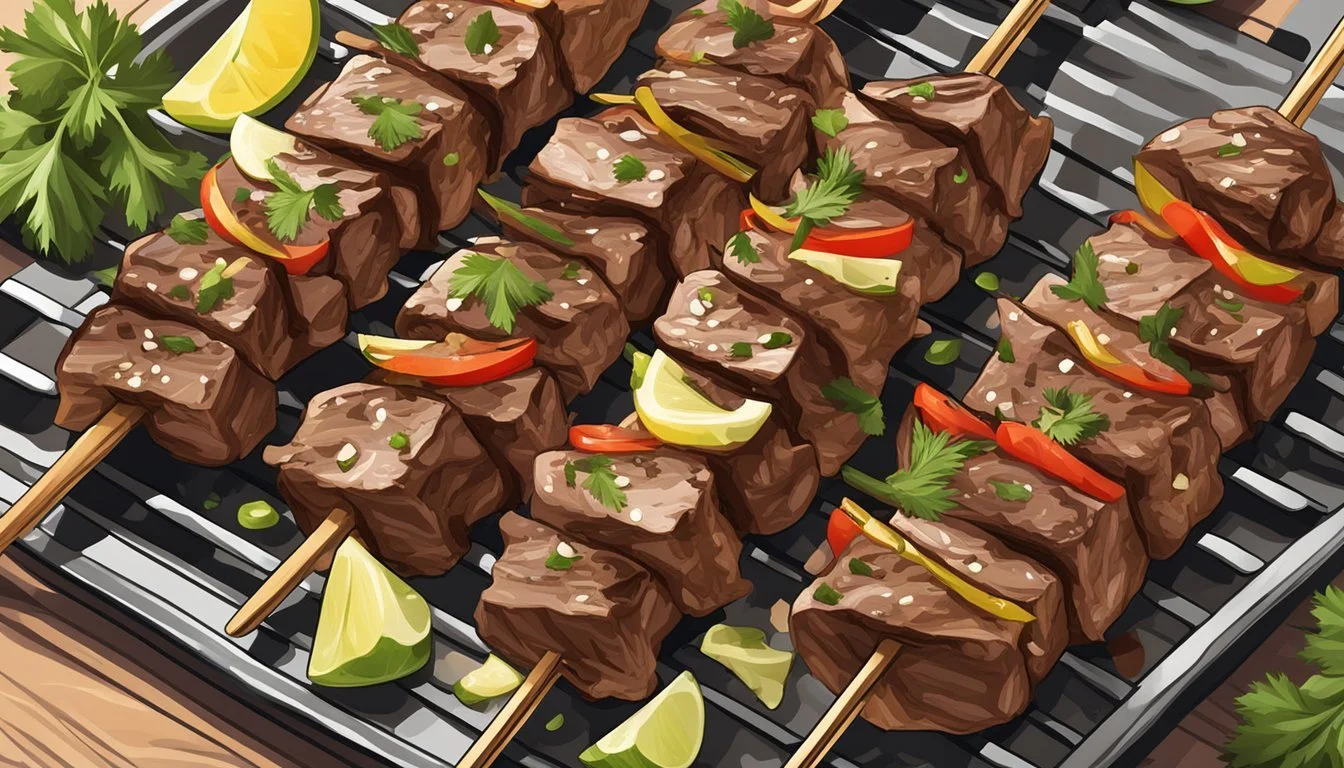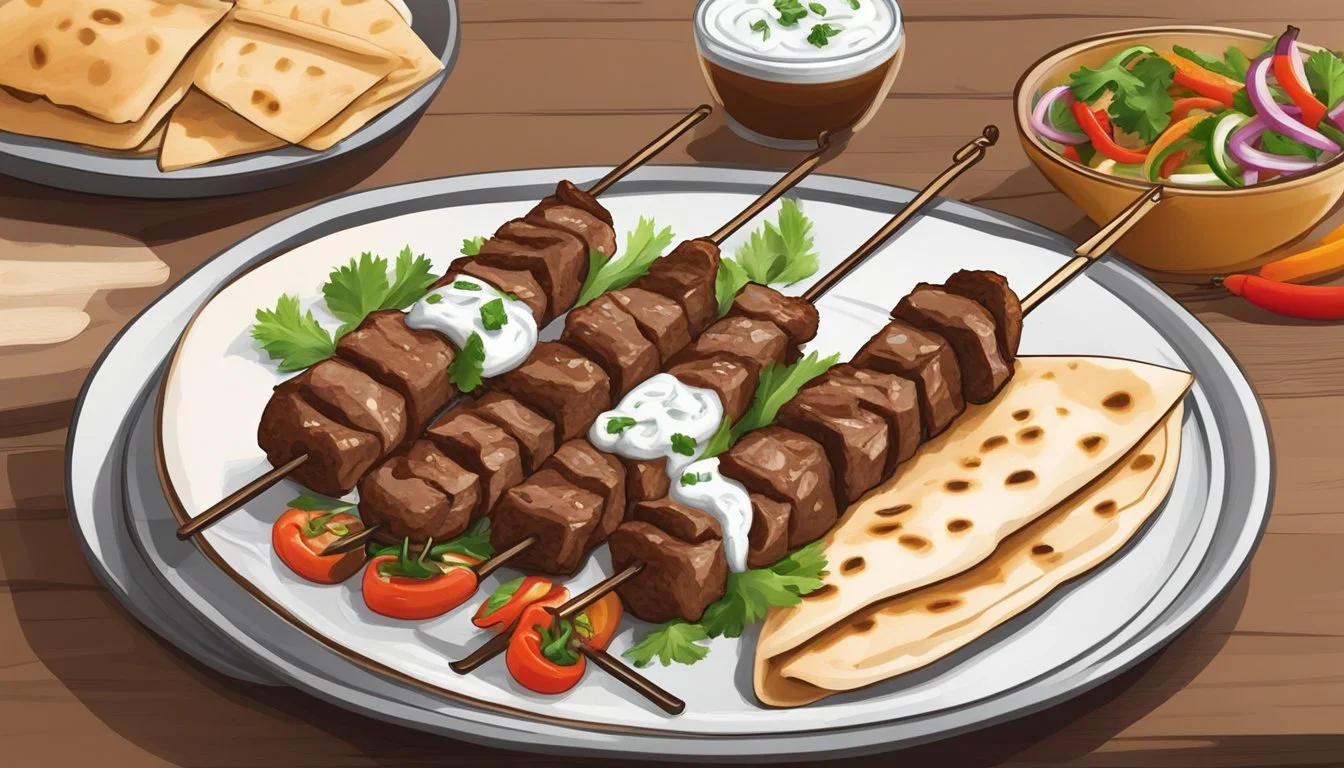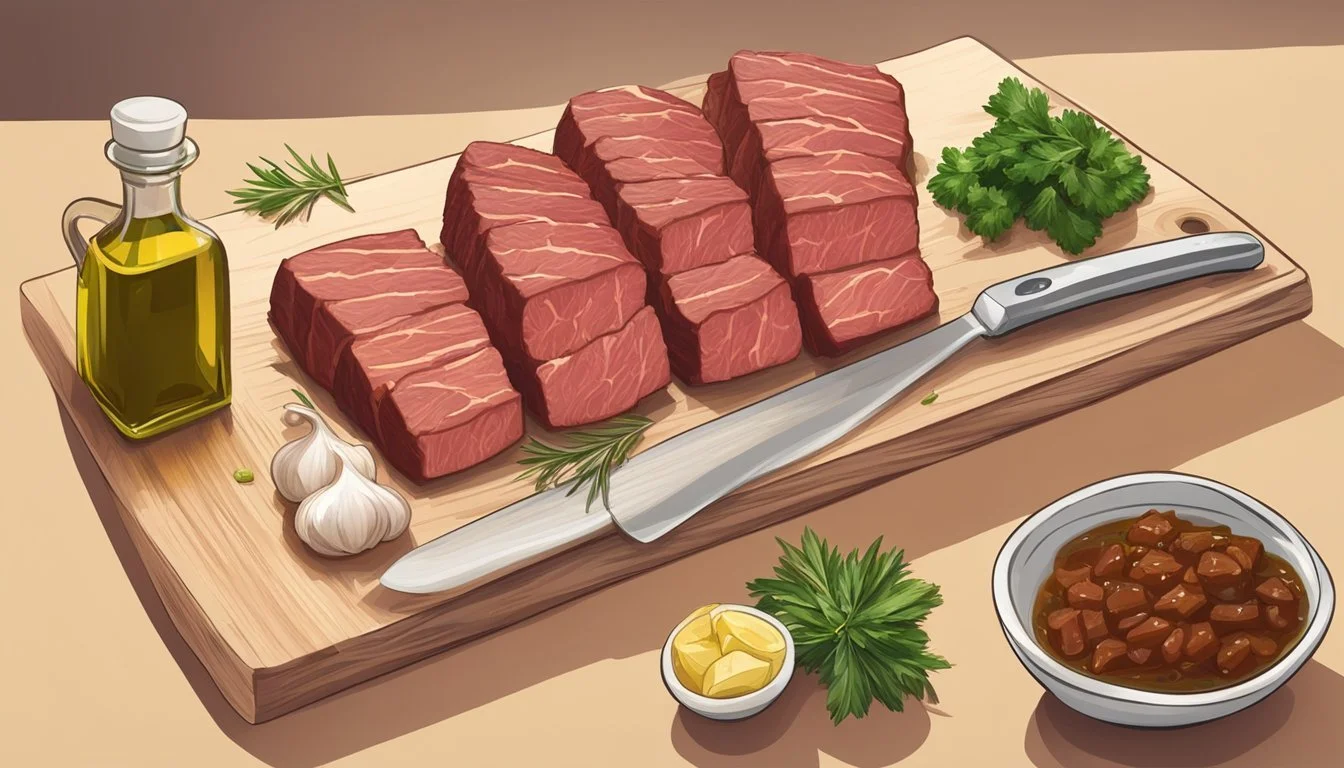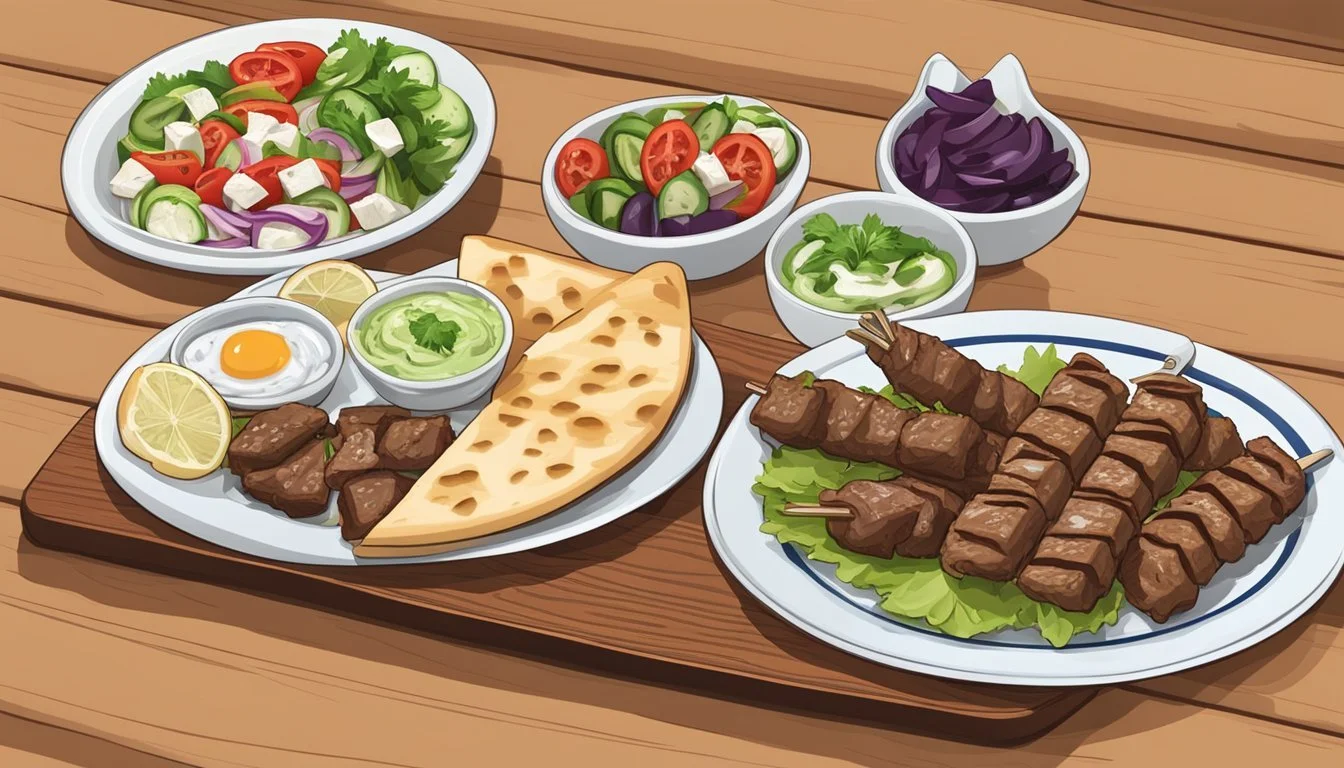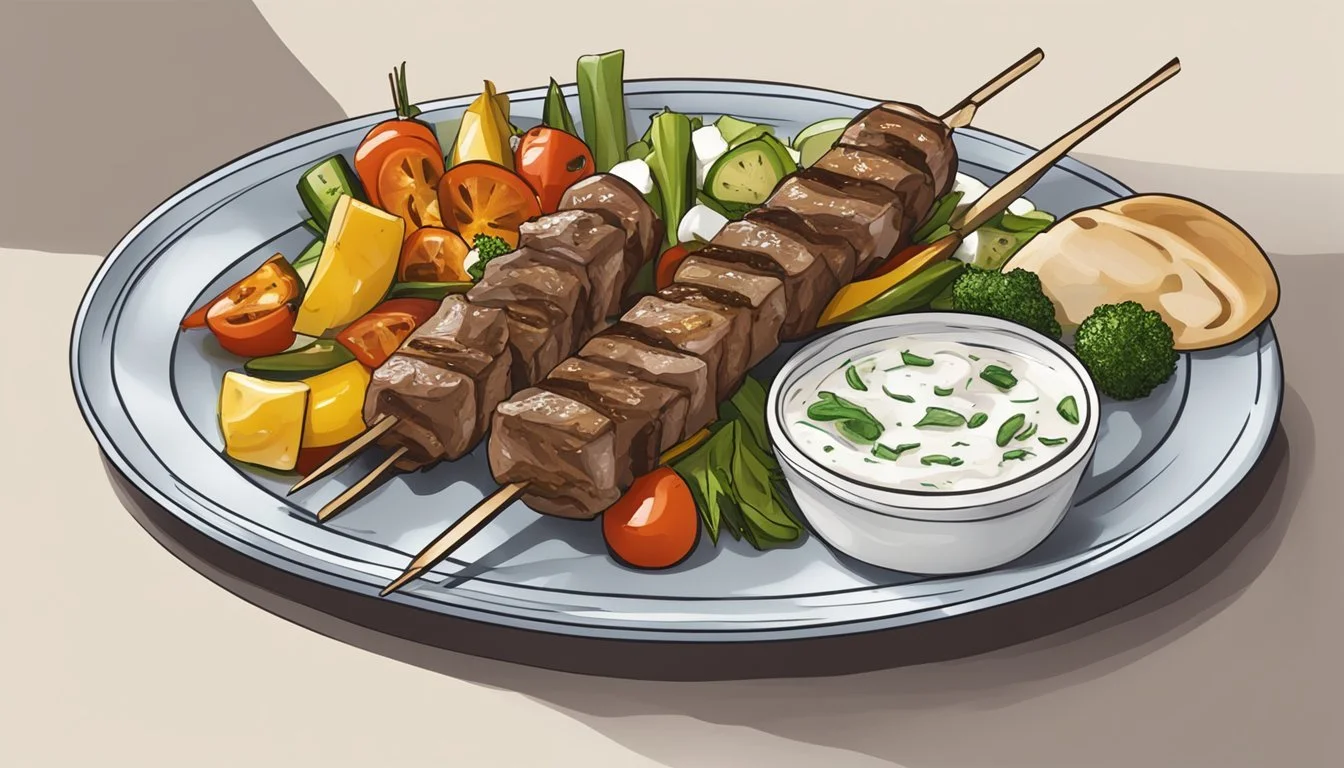How Long Does Beef Souvlaki Last?
Shelf Life and Storage Tips
Beef souvlaki, a delectable Greek dish featuring skewered and marinated pieces of beef, delivers a wonderful blend of flavors and nutrition. For those wondering about its shelf life, it's essential to know how long this savory delight can be safely enjoyed. Properly stored, cooked beef souvlaki can last in the refrigerator for 3 to 4 days.
In addition to its short-term storage, for longer preservation, beef souvlaki can be frozen. Wrapped tightly in aluminum foil or stored in airtight containers, it can last in the freezer for up to 2-3 months without significant loss of flavor or texture. This means you can prepare larger batches and conveniently reheat portions whenever desired.
Ensuring that your beef souvlaki remains fresh involves proper storage techniques after cooking. Cooling the skewers promptly, storing them in airtight containers, and keeping them at an appropriate temperature are key steps. This diligence ensures that the rich flavors and nutritional benefits of this classic dish are maintained.
Overview of Beef Souvlaki
Beef souvlaki is a popular grilled dish from Greece, featuring marinated beef skewered on sticks. This meal is celebrated for its rich flavors and tender texture.
The main ingredients typically include beef, olive oil, lemon juice, garlic, oregano, and various spices. These are combined to create a flavorful marinade.
After marination, the beef is threaded onto skewers and then cooked on a grill. This method ensures a smoky and charred exterior while keeping the meat juicy.
Protein content in beef souvlaki is high, making it a nutritious option that can be part of a balanced diet. It's often served with sides like Greek salad, pita bread, and tzatziki sauce.
Beef souvlaki is not only a favorite at family dinners but also a staple at Greek festivals and gatherings, embodying the cultural heritage of Greek grilling techniques.
Preparation and Ingredients
Making beef souvlaki involves selecting the right meat, crafting a flavorful marinade, assembling onto skewers, and grilling to perfection. Each step plays a critical role in achieving the authentic taste.
Selecting the Right Beef
The quality of beef is paramount. Choose cuts like sirloin or tenderloin for their tenderness and flavor. Visit a trusted butcher to ensure the meat is fresh. Opt for beef that's well-marbled to enhance juiciness during grilling.
For the best results, cut the beef into uniform 1-inch cubes. This helps in even cooking. Trim excess fat but leave enough to keep the meat moist and flavorful.
Creating the Marinade
A well-crafted marinade infuses the beef with essential flavors. Combine olive oil, lemon juice, minced garlic, oregano, salt, and pepper in a bowl.
Whisk until the ingredients are well integrated. Place the beef cubes in a large ziplock bag or glass bowl and pour in the marinade. Ensure the beef is fully covered and refrigerate for at least 2-3 hours, or overnight for deeper flavor penetration.
Assembling the Skewers
Before threading the beef, decide between wooden and metal skewers. Both are effective, but wooden skewers should be soaked in water for 30 minutes to prevent burning.
Thread the marinated beef cubes onto the skewers, ensuring they're evenly spaced. This allows for better heat distribution.
Depending on personal preference, alternate the beef with vegetables such as bell peppers and onions for added flavor and texture.
Grilling Techniques
Prepare the grill by preheating to medium-high heat and oil the grates to prevent sticking. Place the skewers on the grill, turning every 2-3 minutes until the beef is charred evenly.
Aim for a cooking time of 8-12 minutes, depending on the desired level of doneness. Let the beef rest for five minutes post-grilling to allow the juices to redistribute and lock in moisture.
Using a meat thermometer can help ensure the beef reaches the perfect internal temperature.
Accompaniments and Side Dishes
Accompanying beef souvlaki with the right sides enhances its flavors and provides a balanced meal. Traditional Greek sides and fresh salads are the perfect complements.
Traditional Greek Sides
Traditional Greek sides that pair well with beef souvlaki include tzatziki, pita bread, and Greek salad. Tzatziki, a yogurt-based sauce with cucumbers, garlic, and herbs, offers a cool and tangy counterpoint to the savory beef.
Warm pita bread is ideal for wrapping souvlaki and dipping in tzatziki.
A Greek salad made of tomatoes, cucumbers, red onions, olives, and feta cheese brings a refreshing and crisp element to the meal.
These sides not only enhance the taste but also introduce a variety of textures.
Preparing a Fresh Salad
Fresh salads can elevate the dining experience of beef souvlaki. Start with a base of mixed greens or romaine lettuce. Add crunchy vegetables like cucumbers and bell peppers for texture. Chopped tomatoes contribute a juicy sweetness.
For more traditional flavors, consider a mix similar to Greek salad: cucumbers, tomatoes, red onions, olives, and feta cheese.
Dress the salad lightly with olive oil, lemon juice, salt, and pepper. This combination balances the flavors and keeps the salad crisp and fresh.
Ensure the salad is served cold to contrast with the warm beef souvlaki, providing a refreshing accompaniment to the meal.
Storage and Preservation
Proper storage and preservation extend the shelf life of beef souvlaki and maintain its flavor and safety. Key practices involve refrigeration, marinating, freezing, and thawing.
Optimal Beef Souvlaki Storage
Beef souvlaki should be refrigerated if it is not being consumed immediately. Store it in an airtight container or wrap it tightly with plastic wrap. Refrigerated beef souvlaki can typically last about 3 to 5 days.
Before refrigeration, ensure that any marinating is done under cool conditions. Avoid leaving the marinating souvlaki at room temperature for extended periods. Marinating in the refrigerator not only enhances flavor but also keeps the meat safe from bacterial growth.
Freezing and Thawing Practices
For longer storage, freezing beef souvlaki is highly effective. Place the marinated or cooked beef souvlaki in a freezer-safe, airtight container or a vacuum-sealed bag. This method can preserve beef souvlaki for about 2 to 3 months without significantly affecting its taste or texture.
When you are ready to use the frozen beef souvlaki, thaw it safely in the refrigerator. Avoid thawing it at room temperature, as this can promote bacterial growth. Thawing in the refrigerator takes more time but ensures the meat thaws evenly and safely. Once thawed, cook the beef souvlaki within 1 to 2 days.
Serving Suggestions
Beef souvlaki should be served with a variety of sides and beverages to enhance its flavors. Presentation, beverage pairing, and combining with grains are key aspects to consider for an optimal culinary experience.
Presentation Tips
When it comes to presentation, skewers are typically arranged neatly on a platter. Crumbled feta and chopped parsley can be sprinkled on top for a burst of color.
Place warm pita bread alongside the skewers to allow for easy wrapping. Include a small bowl of tzatziki sauce for dipping. Wedges of lemon can be placed at the edges for a fresh citrus flair.
For additional garnish, use slices of red bell pepper and a sprinkling of paprika. This not only adds visual appeal but also enriches the dish with extra flavors.
Pairing with Beverages
Beverage pairings play a crucial role in complementing the savory notes of beef souvlaki. For a traditional Greek experience, ouzo is a popular choice due to its anise flavor which balances the robust taste of the beef.
Assyrtiko wine, known for its crisp and mineral qualities, pairs excellently with the dish. For non-alcoholic options, consider serving with sparkling water infused with a splash of lemon juice.
Herbal tea, especially those with mint or chamomile, provides a refreshing and soothing complement. Keeping the beverages light and refreshing is key to maintaining the focus on the rich flavors of the souvlaki.
Combining with Grains
Grains like rice and quinoa are excellent companions to beef souvlaki. A bed of fluffy rice can absorb the savory juices, enhancing each bite. Lemon rice or herb-infused quinoa can provide a tangy and fresh contrast to the grilled meat.
Create a grain bowl with layers of rice or quinoa, topped with chopped parsley, diced red bell pepper, and a drizzle of olive oil. This setup not only adds bulk to the meal but also introduces varied textures and flavors.
Stuffed pita bread with a mixture of grains and beef souvlaki offers a portable and flavorful option. Integrating grains seamlessly into the meal increases its nutritional value while keeping it delicious and satisfying.
Safety and Health Considerations
Beef souvlaki, a popular Greek dish, provides a rich source of protein while offering mouthwatering flavors. Proper handling and storage of beef souvlaki are essential to ensure safety and maintain nutritional value.
Storage Guidelines
For optimal safety, raw beef souvlaki should be stored in the refrigerator. It is recommended to use within 1 to 2 days. Cooked beef souvlaki can be safely stored in the refrigerator for up to 3-4 days. Always store it in an airtight container to prevent contamination.
Proper Cooking
Cook beef souvlaki to an internal temperature of 130°F for medium rare or 140°F for medium. Use a meat thermometer to verify the internal temperature. Proper cooking ensures harmful bacteria, such as E. coli, are destroyed.
Marinating Beef
Marinating beef not only enhances flavor but also introduces heart-healthy fats, antioxidants, and anti-inflammatory substances. Always marinate beef in the refrigerator, not on the counter. It's best to marinate for at least 1 hour or preferably overnight.
Nutritional Benefits
Beef souvlaki is a good source of essential nutrients like protein, iron, and B vitamins. It supports muscle growth and repair. Proper handling and cooking ensure these nutrients are preserved while keeping the meat safe for consumption.
By following these guidelines, beef souvlaki can be enjoyed safely, retaining its delicious taste and nutritional benefits.

